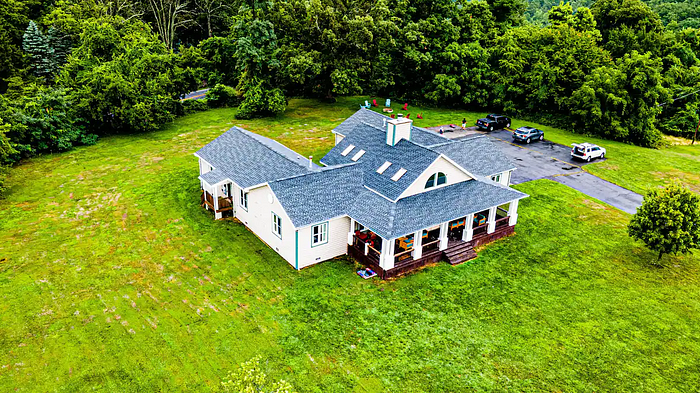
Mountaineering: Scaling the Peaks Safely in the USA
Trekking is one of the most exciting activities that require the use of the mind and the body and comes with the most beautiful sceneries and achievement. The United States of America again, with its vast and variegated terrains offers mountaineers a myriad of peaks to scale. These ranges include the Rockies, the Sierras, and just about any mountain range you can imagine and that means there is a climb for every category. But it is not without risking the lives of climbers through accidents if one is not prepared, knowledgeable, and respects these mountains.
Here is a checklist of important things one should put into consideration before participating in mountaineering in the USA.
Choosing the Right Peak
One of the most essential and critical aspects of mountaineering is the selection of a route according to the climber's mountaineering experience. Some of the most popular mountaineering destinations in the USA include:
Mount Rainier, Washington: Featuring glaciers and extreme weather, this mountain is only for professionals, unlike the previous five ones.
Mount Whitney, California: This is the tallest mountain in the conterminous states of America and has easy routes for climbers who have little experience but also has very technical routes for those who are very experienced climbers.
Longs Peak, Colorado: A technical climb in which one has a keyhole route famous worldwide that attracts climbers from all over the world.
Denali, Alaska: This is the highest peak in North America, and climbing it often needs navigation, and one must undergo through serious rehearsals especially when it comes to adverse weather conditions.
Preparing for the Climb
Safety is important when one is in the mountains and this is why preparation is highly encouraged. Here are some essential steps:
Physical Conditioning
Mountaineering requires the best level of fitness in the physical sense of the word. Climb into a strict exercising regime that involves exercises that will work the cardiovascular system, strength training, and stamina-building exercises. Concentrate on working out the legs specifically the calf muscles and the tummy and the general endurance.
Gear and Equipment
It has always been emphasized that one cannot scrimp on the quality of equipment being used in production. Essential equipment includes:

Climbing harness and rope: It is important, especially during technical climbs.”
Ice axe and crampons: Required for the weather that involves snow and intense cold.
Helmet: Safeguards against falling rocks as well as frozen particles such as ice.
Proper footwear: School type: Sturdy, insulated mountaineering boots.
Layered clothing: As a way of controlling and adjusting the body temperatures and other environmental conditions.
Navigation tools: Geographical tool: map, compass, and a GPS device.
Skills and Knowledge
It is very useful when one takes a mountaineering course or attends a mountaineering school. Learn essential skills such as:
Navigation: Signs of learning Map reading, using of compass as well, and knowing how GPS works.
Crevasse rescue: How to cross a crevasses and how to rope up and rescue from a crevasses easily.
Ice climbing: Correct way of using ice axes as well as crampons.
Avalanche safety: Identifying the areas mostly affected by avalanches and how to use an avalanche beacon.
Understanding the Environment
Among all landscapes, mountains are the most varied and can turn on you at any moment. Respecting the environment is paramount:
Weather Conditions
The climber should in addition ensure that he has checked the weather conditions before the climb. Mountain climate can be very unpredictable which means that one has to be ready to encounter rain, gusts of wind, and drop in temperature.
Altitude Sickness
Take time to get used to the altitude to avoid altitude sickness. It is recommended to go up gradually, to drink a lot of water, and recognize how it feels which are things such as headache, nausea, and dizziness. In the case of worsening of the symptoms, start descending at once.
Leave No Trace
I will follow the guidelines set out in Leave No Trace to ensure that the effect on the mountain's ecosystems is kept to a minimum. Practice Waste management by moving all plastic and cal trash you may find along the trails, keeping off wildlife habitats, and using only the designated trails.
During the Climb
While on the mountain, keep safety as your top priority:
Pace Yourself
The case with the speed of climbing; once climbers get too tired then the chances of getting altitude ailments become high. Keep on working at a reasonable rhythm and try to get some rest after a while.
Communication
Make sure that you are in touch with the people that you climb with on the regular. Agree on cues for leaving such situations and please check in with each other regularly to make sure that each is comfortable.
Decision Making
If conditions deteriorate or one of the members of the climbing team is uncomfortable then the climb should be aborted for another at another time.
Post-Climb Recovery
After a strenuous climb, proper recovery is essential:
Hydration and Nutrition: Take enough water and any other healthy and tasty foods you desire.
Rest: They should be allowed to rest and sleep after being actively used as a result of movement all through the time they are awake.
Reflection: Debrief after the climb, positive aspects of the climb as well as the things that can be done better the next time.
Conclusion
Rock climbing in the USA provides unforgettable sensations of conquering peaks that inspire awe and present a physical and mental strain. When selecting the right peak, ensuring one is well equipped, observing the surroundings, and being keen on safety then the climaxes of the thrilling peaks can be attained safely. Whether one is an experienced mountain climber or an amateur who is only wanting to climb his or her first mountain then the mountains have something special for you with great adventures that will leave you feeling fulfilled and satisfied the moment that you reach the top of the mountain.





